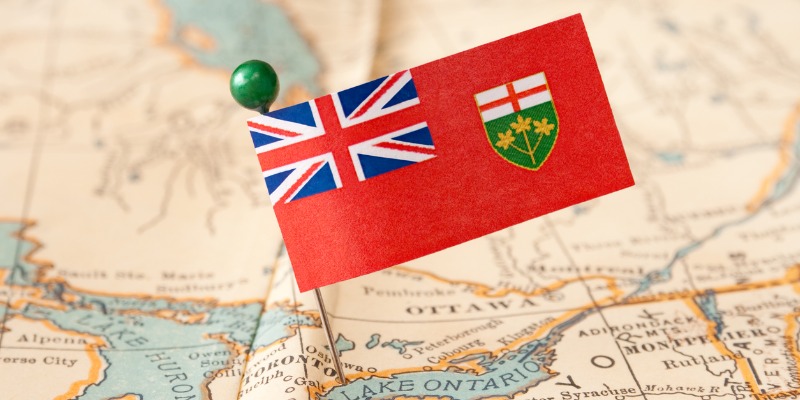This post originally appeared on the Fraser Institute Blog, March 25th, 2024.
Ontario government’s fiscal history drenched in red ink

The Ford government will table its next budget on Tuesday. But a longer-term perspective on the evolution of Ontario’s government finances provides some important context for today. Since Confederation, Ontario has seen a massive expansion of its revenues, expenditures and debt. And its fiscal performance in terms of balancing its finances has oscillated over the years. Using data from the Finances of the Nation database, assorted Ontario budgets, and the Fiscal Reference Tables, a picture of change and variable fiscal responsibility emerges.
With revenues of $2.3 million and expenditures of $1.2 million in 1868, Ontario had a substantial surplus and no debt. Indeed, substantial surpluses marked much of the pre-Second World War era. By 2023, the Ontario government had spending of $199 billion and revenues of $193 billion for a deficit of nearly $6 billion and a net debt of $400 billion. Ontario government spending on a real per-capita basis was relatively modest from 1867 to 1913 (despite province-building activities such as roads and railroads) and was financed primarily by federal government grants and natural resource revenues from forestry and mining. The period after 1914 saw an expansion of both government spending and revenues that was quite dramatic compared to the prior period, but which paled in comparison with the post-1957 expansion into health, education and social services.
With respect to revenue composition, Ontario gradually shifted from a reliance on natural resource rents and government grants to own-source revenues from income, consumption and other assorted taxes. When compared to the federal government—the only other Canadian government larger than Ontario in terms of total revenues or expenditure—in real per-capita terms Ontario spent less than the federal government until the early 1990s surpassing the Ottawa in 1993 for the first time. By 2020, real per-capita Ontario government spending was actually more than federal real per-capita spending, though the pandemic years saw a reversal.
What’s truly remarkable about Ontario’s finances is its growing reliance on deficit financing since the 1970s. Over the entire 1867 to 2023 period, Ontario ran an operating deficit in 70 out of 157 years or approximately 45 per cent of the time. However, in the first 100 years from Confederation (1867 to 1967) Ontario only ran 22 deficits—that’s 22 per cent of the time. In the fiscal years from 1968 to 2023, Ontario ran 48 deficits in 55 years—or deficits 87 per cent of the time. Deficits have gone from being a temporary departure for exceptional times to a near permanent device.
The accompanying charts plot Ontario’s deficits, its deficit-to-GDP ratio, its net debt and its net debt-to-GDP ratio from 1960 to the present. The first chart illustrates that Ontario maintained its largely balanced budget approach to its finances for most of the 1960s but incurred deficits in the 1970s.
Its three largest deficits were in 2010 ($19.3 billion), 2011 ($17.3 billion) and 2021 ($16.4 billion). As a share of GDP, the second chart illustrates that Ontario’s three largest deficits were in 1992 (3.7 per cent), 1993 (4.1 per cent) and 1994 (3.5 per cent). Ontario’s pandemic deficit peak in 2021 came in at 1.7 per cent placing it lower than some of the deficits of the 1970s and early 1980s.
Deficits plus interest eventually result in accumulated debt and Ontario like other provinces has added to that by borrowing for capital spending on top of its operating deficit. As the final chart shows, in 1960 Ontario had a net debt of $994 million and net debt-to-GDP ratio of 6 per cent. Today, net debt tops $400 billion and the net debt-to-GDP ratio is about 36 per cent. The profiles for net debt and net debt-to-GDP suggest Ontario’s net debt has grown in three phases.
The accumulation of net debt takes off in the mid 1970s, then accelerates in the 1990s and accelerates yet again after 2008. These periods of acceleration have all coincided with periods of economic slowdown or recession in the province—the low growth stagflation era of the 1970s, the recession of the early 1990s and recession/financial crisis era of 2007 to 2009. In each of these periods of distress, deficits mounted, yet even when the economy and revenues began to recover, spending growth and deficits continued. In essence, the Ontario government ran deficits during bad times and better times, giving a fiscal dimension to the provincial motto “Loyal She Remains.”
As Ontario moves forward from the pandemic era, it remains to be seen if the government will rein in perpetual deficit financing and halt debt accumulation, or if the government will embark on yet another cycle of mounting debt. In many respects, the government has continued to spend at a rate well above its economic ability and performance. Key to the issue is Ontario’s productivity lag, which has resulted in slow growth relative to the rest of the country. If the Ford government continues to spend as if Ontario was still experiencing the high growth rates of an earlier era, that’s not a sound recipe for fiscal responsibility.





